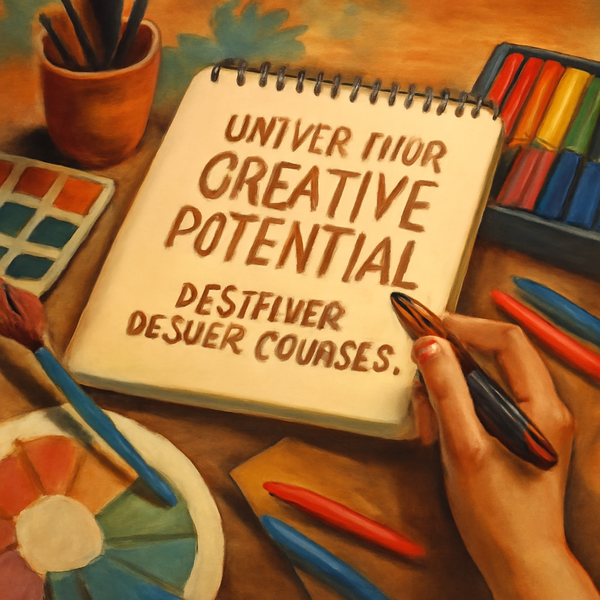
Embark on your creative journey with our beginner graphic design courses, designed to equip you with the fundamental skills needed to excel in this dynamic field. Whether you're looking to enhance your professional profile, explore a new hobby, or even launch a career in visual communication, these courses provide a solid foundation. Discover the principles of design, learn essential software, and start bringing your ideas to life.
Getting Started with Graphic Design Fundamentals
Graphic design is a visual language that communicates messages through typography, imagery, color, and layout. For beginners, understanding these core elements is paramount. Typography involves the art and technique of arranging type to make written language legible, appealing, and engaging when displayed. This includes choosing the right fonts, understanding kerning, leading, and tracking to create effective text hierarchies. Color theory is another critical component; it explores how colors interact, evoke emotions, and influence perception. Learning about the color wheel, complementary colors, analogous colors, and the psychological impact of different hues will allow you to create visually harmonious and impactful designs. Layout and composition focus on arranging elements on a page or screen to create balance, visual flow, and a clear hierarchy of information. This involves mastering principles like the rule of thirds, the golden ratio, alignment, proximity, and repetition. These fundamental building blocks are the bedrock upon which all successful graphic design is built, enabling you to create designs that are not only aesthetically pleasing but also functional and effective in conveying their intended message to the target audience.
Essential Tools and Software for Aspiring Designers
To translate your creative vision into tangible designs, proficiency in industry-standard software is essential. Adobe Photoshop is the go-to tool for image manipulation, retouching, and creating raster-based graphics. You'll learn how to work with layers, masks, brushes, and adjustment layers to refine photographs and create intricate digital artwork. Adobe Illustrator, on the other hand, is perfect for creating vector graphics, logos, illustrations, and scalable designs that maintain their quality at any size. Mastering tools like the pen tool, shape tools, and vector editing capabilities will open up a world of possibilities for logo design and branding. Furthermore, Adobe InDesign is crucial for page layout and publishing, enabling you to design professional brochures, magazines, books, and interactive documents. Understanding its features for managing text, images, and master pages is vital for print and digital publishing projects. Beyond the Adobe Creative Suite, many beginner-friendly and free alternatives exist, such as Canva for quick social media graphics and GIMP for photo editing, providing accessible entry points into the world of digital design tools and empowering you to start creating immediately.
Understanding Design Principles and Best Practices
Effective graphic design goes beyond just aesthetics; it’s about clear communication and strategic problem-solving. Key design principles provide a framework for creating visually appealing and functional designs. Contrast is used to create distinction and draw attention to important elements, often achieved through differences in color, size, or typography. Repetition helps to create a sense of unity and consistency, reinforcing brand identity and guiding the viewer’s eye. Alignment ensures that elements are visually connected, creating a clean and organized look. Proximity groups related items together, reducing clutter and improving readability. Hierarchy guides the viewer through the design, highlighting the most important information first. Balance, whether symmetrical or asymmetrical, creates stability and harmony within the composition. White space, or negative space, is as important as the content itself; it allows elements to breathe, improves readability, and adds sophistication to the design. Understanding and applying these principles consistently will elevate your work from amateur to professional, ensuring your designs are not only visually engaging but also effectively communicate your intended message and achieve your project goals.
Developing Your Unique Design Style and Portfolio
As you progress through your beginner graphic design courses, cultivating a unique design style is a crucial step in establishing your identity as a designer. This involves experimenting with different aesthetics, color palettes, typography choices, and compositional approaches to discover what resonates with you and the types of projects you enjoy. Don't be afraid to draw inspiration from established designers, art movements, and the world around you, but always strive to put your own personal spin on it. Building a strong portfolio is essential for showcasing your skills and attracting potential clients or employers. Start by creating personal projects that demonstrate your understanding of the principles you've learned. Include a variety of work that highlights different aspects of your abilities, such as logo design, poster creation, web layout mockups, or social media graphics. Ensure your portfolio is well-organized, visually appealing, and easy to navigate, with clear descriptions for each project explaining your process and the problem you were solving. Regularly update your portfolio with your latest and best work to keep it fresh and relevant to your evolving career aspirations and the current demands of the design industry.
The Future of Graphic Design and Career Opportunities
The field of graphic design is constantly evolving, driven by technological advancements and shifting communication trends. With the rise of digital media, demand for skilled graphic designers in areas like web design, UI/UX design, motion graphics, and social media content creation continues to grow. As a graphic designer, you can find opportunities in various settings, including advertising agencies, marketing departments, publishing houses, tech companies, and as a freelance professional. Specializing in a particular niche, such as branding, illustration, or packaging design, can further enhance your career prospects and allow you to become an expert in a specific area. Continuous learning is key in this dynamic industry; staying updated with the latest software, design trends, and emerging technologies will ensure you remain competitive and adaptable. Exploring areas like augmented reality (AR) and virtual reality (VR) design, or sustainable design practices, can open up even more exciting future career paths. The foundational skills acquired through beginner graphic design courses provide a robust platform from which to launch a fulfilling and successful career in visual communication and creative industries.